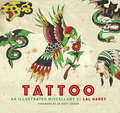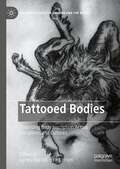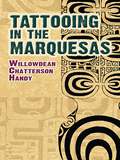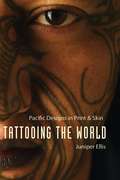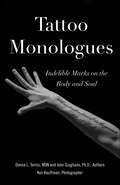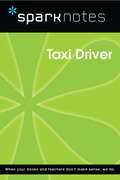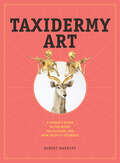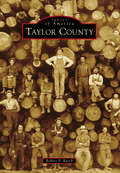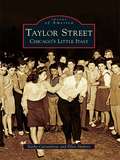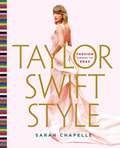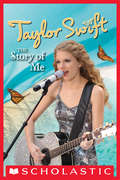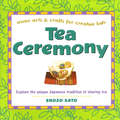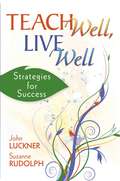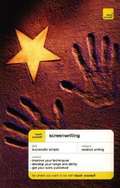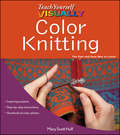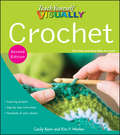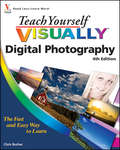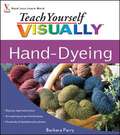- Table View
- List View
Tattoo: An Illustrated Miscellany
by Lal Hardy'Beautiful, inspiring and informative' - BidishaLondon tattoo legend Lal Hardy reveals the fascinating hidden world of tattoo, past and present.With a wealth of previously unpublished photographs, details and anecdotes, Tattoo preserves many unique and valuable items of tattoo culture, including:· Historical stencils and flash· Customised machines, traditional hand-tools and animal-marking equipment· Collector's cards, bubblegum cards and transfers· Memorabilia and tributes relating to tattoo legends such as George Burchett and The Great Omi· Postcards, toys, ornaments, T-shirts and other merchandise· Supply catalogues, magazines, books and art· Rare ephemera - awards, badges, business cards, convention passes, postage stamps and hand-drawn signsLAL HARDY was born in London in 1958. He opened New Wave Tattoo in north London's Muswell Hill when he was just twenty-one years old. Lal is part of an international community of highly respected tattoo artists. This is his sixth book.MATT LODDER is an expert on body art and body modification. He is the author of Tattoo: An Art History and is Director of American Studies at the University of Essex.
Tattooed Bodies: Theorizing Body Inscription Across Disciplines and Cultures (Palgrave Studies in Fashion and the Body)
by James Martell Erik LarsenThe essays collected in Tattooed Bodies draw on a range of theoretical paradigms and empirical knowledge to investigate tattoos, tattooing, and our complex relations with marks on skin. Engaging with diverse disciplinary perspectives in art history, continental philosophy, media studies, psychoanalysis, critical theory, literary studies, biopolitics, and cultural anthropology, the volume reflects the sheer diversity of meanings attributed to tattoos throughout history and across cultures. Essays explore conceptualizations of tattoos and tattooing in Derrida, Deleuze and Guattari, Lacan, Agamben, and Jean-Luc Nancy, while utilizing theoretical perspectives to interpret tattoos in literary works by Melville, Beckett, Kafka, Genet, and Jeff VanderMeer, among others. Tattooed Bodies prompts readers to explore a few significant questions: Are tattoos unique phenomena or an art medium in need of special theoretical exploration? If so, what conceptual paradigms and theories might best shape our understanding of tattoos and their complex ubiquity in world cultures and histories?
Tattooing in the Marquesas
by Willowdean Chatterson HandyThis definitive source on the intricate tattoos of Polynesia's Marquesas Islands offers a rare glimpse of a dying art. Because of the colonial authorities' 1884 ban on tattooing, there remained only a single surviving tattoo artist at the time of this 1921 survey—and a dwindling number of living examples. These 38 plates of black-and-white drawings and photographs provide an unusually complete and intimate record of a sophisticated art form.The Marquesas consist of a dozen rugged volcanic islands that lie 1,000 miles northeast of Tahiti. Rich in oral traditions, folklore, and decorative arts, their complex culture was devastated by the intrusions of outsiders during the nineteenth century. In the early 1920s, Hawaii's Bishop Museum sponsored an expedition to preserve what was left of the islanders' vanishing world. Willowdean Chatterson Handy, an expedition associate, created this priceless record of the ancient body art rituals. In addition to detailed information about tattoo methods and customs, Handy's account features fascinating insights into the designs' symbolic significance and their representation of social status. Her painstaking drawings of tattoo patterns are accompanied by captions that explain the traditional motifs.
Tattooing the World: Pacific Designs in Print and Skin
by Juniper EllisIn the 1830s an Irishman named James F. O'Connell acquired a full-body tattoo while living as a castaway in the Pacific. The tattoo featured traditional patterns that, to native Pohnpeians, defined O'Connell's life; they made him wholly human. Yet upon traveling to New York, these markings singled him out as a freak. His tattoos frightened women and children, and ministers warned their congregations that viewing O'Connell's markings would cause the ink to transfer to the skin of their unborn children. In many ways, O'Connell's story exemplifies the unique history of the modern tattoo, which began in the Pacific and then spread throughout the world. No matter what form it has taken, the tattoo has always embodied social standing, aesthetics, ethics, culture, gender, and sexuality. Tattoos are personal and corporate, private and public. They mark the profane and the sacred, the extravagant and the essential, the playful and the political. From the Pacific islands to the world at large, tattoos are a symbolic and often provocative form of expression and communication.Tattooing the World is the first book on tattoo literature and culture. Juniper Ellis traces the origins and significance of modern tattoo in the works of nineteenth- and twentieth-century artists, travelers, missionaries, scientists, and such writers as Herman Melville, Margaret Mead, Albert Wendt, and Sia Figiel. Traditional Pacific tattoo patterns are formed using an array of well-defined motifs. They place the individual in a particular community and often convey genealogy and ideas of the sacred. However, outside of the Pacific, those who wear and view tattoos determine their meaning and interpret their design differently. Reading indigenous historiography alongside Western travelogue and other writings, Ellis paints a surprising portrait of how culture has been etched both on the human form and on a body of literature.
Tattoo Monologues: Indelible Marks on the Body and Soul
by Donna L. Torrisi John GiuglianoBody art can tell personal stories. When linked to a difficult or traumatic life, it can even restore one’s sense of well-being. As director of a community health center for twenty-seven years and as a nurse practitioner for over forty years, Donna Torrisi became fascinated with the stories behind her patients’ tattoos. When she began to ask her female patients about their markings, themes of trauma, pain, and loss emerged, and it became clear that the art indelibly marked on their bodies had played a part in their healing and redemption.The women featured in Tattoo Monologues demonstrate vulnerability and courage as they share both their personal tattoo narratives and photos of the images on their bodies. These women represent diverse cultures, ethnicities, and professional contexts, but they are united by their use of tattoos as a tool for processing traumatic life experiences. The images, stories, emotions, and journeys in this book collectively tell a compelling story. A story of skin and ink. A story of trauma and adversity. A story of courage and resilience.
Taxi Driver (SparkNotes Film Guide)
by SparkNotesTaxi Driver (SparkNotes Film Guide) Making the reading experience fun! SparkNotes Film Guides are one-stop guides to great works of film–masterpieces that are the foundations of filmmaking and film studies. Inside each guide you&’ll find thorough, insightful overviews of films from a variety of genres, styles, and time periods. Each film guide contains:Information about the director and the context in which the film was made Thoughtful analysis of major characters Details about themes, motifs, and symbols Explanations of the most important lines of dialogue In-depth discussions about what makes a film so remarkable SparkNotes Film Guides are an invaluable resource for students or anyone who wants to gain a deeper understanding of the great films they know and love.
Taxidermy Art: A Rogue's Guide to the Work, the Culture, and How to Do It Yourself
by Robert MarburyIn this collection of taxidermy art, you’ll find a winged monkey with a fez and a martini glass, a jewel-encrusted piglet, a bionic fawn, and a polar bear balancing on a floating refrigerator. Author Robert Marbury makes for a friendly (and often funny) guide, addressing the three big questions people have about taxidermy art: What is it all about? Can I see some examples? and How can I make my own? He takes readers through a brief history of taxidermy (and what sets artistic taxidermy apart) and presents stunning pieces from the most influential artists in the field. Rounding out the book are illustrated how-to lessons to get readers started on their own work, with sources for taxidermy materials and resources for the budding taxidermist.
Taxidermy Goes Wild!: The funkiest, freakiest (and outright creepiest) beastly scenes
by Rob ColsonStuffed with a wonderfully weird collection of taxidermy from across the globe, Taxidermy Goes Wild will leave you both amused and confused. Revel in scenes of musical mice, basket-balling bengals, gun-toting rodents and lawn-mowing moles.Bringing together all the scenes nature never intended, this full-colour volume really does showcase the bizarre taxidermy on sale and on display. From a swearing squirrel in a London antiques shop, to a murderous mouse serving arsenic in a New York store, nothing is off-limits. Taxidermy Goes Wild is the very best - and the very worst - of anthropomorphic wildlife.
Taylor County
by Robert P. RuschWhen Wisconsin became a state in 1848, its densely forested north awaited railroad construction before settlement. Taylor County, the "Garden Spot of Northern Wisconsin," was founded on March 4, 1875. Named for then-governor William R. Taylor, the area was primarily forested with eastern hemlock. The county's portion of the Wisconsin Central Railroad was built in 1873, and station sites were named for suburbs of Boston, including Medford, Charlestown, Chelsea, and Westboro. The county's early years were dominated by lumbering and leather tanning, the latter made possible by tannic acid leached from hemlock bark. By 1900, dairy farms dotted its glacial hills. Today, Taylor County's municipalities are home to diverse industries, ranging from snowshoe manufacturing to America's largest pizza plant.
Taylor Street: Chicago's Little Italy (Images of America)
by Ellen Shubart Kathy CatramboneChicago's Near West Side was and is the city's most famous Italian enclave, earning it the title of "Little Italy." Italian immigrants came to Chicago as early as the 1850s, before the massive waves of immigration from 1874 to 1920. They settled in small pockets throughout the city, but ultimately the heaviest concentration was on or near Taylor Street, the main street of Chicago's Little Italy. At one point a third of all Chicago's Italian immigrants lived in the neighborhood. Some of their descendents remain, and although many have moved to the suburbs, their familial and emotional ties to the neighborhood cannot be broken. Taylor Street: Chicago's Little Italy is a pictorial history from the late 19th century and early 20th century, from when Jane Addams and Mother Cabrini guided the Italians on the road to Americanization, through the area's vibrant decades, and to its sad story of urban renewal in the 1960s and its rebirth 25 years later.
Taylor Swift Style: Fashion Through the Eras
by Sarah ChapelleAn instant New York Times and USA Today bestseller!Dazzling. Incomparable. Unforgettable. The definitive book of Taylor Swift's fashion evolution. This gorgeous hardcover edition has gilded gold edges, foiled cover accents and colored endpapers. For Taylor Swift, fashion and music go hand-in-hand—each playing a powerful role in shaping the narrative of this generation’s most prolific storyteller. Red lipstick isn’t just a makeup choice—it’s the emblem of an era. A mini skirt isn’t simply part of a cute outfit—it’s a suit of armor. From cowboy boots to teetering heels, fairytale dresses to bleach-tinged tresses, and the many memorable moments in between, Taylor Swift Style tells the fashion story behind every single Taylor Swift album, tracing Swift’s musical evolution along with her ever-changing personal style. From red carpet looks, to streetwear, to tour costumes, Sarah Chapelle of the successful Instagram and blog Taylor Swift Style, has spent more than a decade documenting Swift’s fashion choices and the intention behind each ensemble. Her deep dives into songs, lyrics, and behind-the-scenes insights paint a portrait of a megastar who knows exactly what she is doing. Taylor Swift Style seeks to explain the ‘why’ behind Swift’s outfits—the Easter Eggs and deeper meanings behind every hemline and haircut—that speak to the emotional context of each musical moment. With over two hundred photos dating from Swift’s earliest days as a country singer in Nashville, up through the present as a renowned pop icon, paired with insightful commentary, Taylor Swift Style is a one-of-a-kind keepsake and a must-have for Swifties.
Taylor Swift: The Story of Me
by Riley BrooksTaylor Swift has grown from country's darling to America's sweetheart!Taylor Swift has been a music superstar since she was a teenager, but now she is doing even more! When she's not selling out arenas, Taylor is making a name for herself in fashion, cosmetics, and even movies. Learn about Taylor's life and work in this awesome book full of pictures and fun facts!
Tea Ceremony
by Shozo SatoTea Ceremony is an exciting and fun way to introduce Asian culture to kids. Reader will learn: <P><P>All the steps for performing a tea ceremony at home through easy-to-follow instructionExplores all the elements of an authentic Japanese tea ceremony, including the tea utensils such as the scoop, whisk, bowl, and fukasa (silk cloth used for cleaning utensils), the proper technique for whipping tea, and the different kinds of tea used <P>The Asian Arts & Crafts for Creative Kids series is the first series, aimed at readers ages 7-12, that provides a fun and educational introduction to Asian culture and art. Through hands-on projects readers will explore each art--engaging in activities to gain a better understanding of each form.
Tea Wisdom
by Aaron FisherSome of life's greatest pleasures can be found in the simple things, and there is nothing more basic, yet wonderful, than enjoying a steaming cup of tea on a damp, rainy day. Tea Wisdom is a wonderful collection of tea quotes, drawn from different centuries and parts of the world, celebrating the ability of tea to calm the nerves, enliven the mind and strengthen the spirit. Covering the full range of a tea lover's appreciation for this most celebrated of beverages, Tea Wisdom makes for a lovely treat.
Tea Wisdom
by Aaron FisherSome of life's greatest pleasures can be found in the simple things, and there is nothing more basic, yet wonderful, than enjoying a steaming cup of tea on a damp, rainy day. Tea Wisdom is a wonderful collection of tea quotes, drawn from different centuries and parts of the world, celebrating the ability of tea to calm the nerves, enliven the mind and strengthen the spirit. Covering the full range of a tea lover's appreciation for this most celebrated of beverages, Tea Wisdom makes for a lovely treat.
Teach Well, Live Well: Strategies for Success
by John Luckner Suzanne RudolphTeaching is a highly rewarding—and highly demanding—profession. Honoring educators for the invaluable work they do, this unique resource provides critical information about being a highly competent teacher while living a rewarding, satisfying life outside of work. New and experienced teachers will find a unique collection of strategies for developing essential skills for being masterful in teaching and in life. Focused on preparation and effective teaching techniques, this nuts-and-bolts volume helps teachers find the right balance between personal and professional priorities and covers a wide range of topics, such as: •Increasing their teaching effectiveness •Improving their ability to collaborate with others •Developing self-care strategies for a vibrant personal and professional life Featuring “bottom line” tips, reproducibles for teacher reflection and support, and up-to-date resources, Teach Well, Live Well is an essential tool for educators looking to enjoy vibrant, productive careers and lives.
Teach Yourself Digital Home Movie Making
by Peter Cope'Digital' is a term that is bandied around often by marketeers who see it as a synonym for 'cutting edge' and it now appears in almost every walk of life: digital radio, digital phones, digital cameras. Digital, in its most common, if clinical, meaning describes the way in which real world information -- such as sound, colour and light -- are converted into numeric form. When we talk about digital video the key distinguishing feature is its quality. A digital video signal -- such as that produced by a sensor in a digital camera -- doesn't suffer degradation in the same way as an analogue signal. A single frame of video will be more sharply defined than that from an equivalent analogue camera. Digital video really comes into its own when we start thinking about editing. The book teaches you everything related to Digital Home Movie Making.
Teach Yourself Film Making
by Tom HoldenA straightforward guide for people who have been trying to make films, with all the techniques to succeed.
Teach Yourself Film Studies
by Warren BucklandTo study film should not be thought of as an activity inferior to studying other arts, such as theatre, painting or opera, for two reasons. Firstly, film occupies a dominant place in society and because film is a popular medium, it should be studied seriously. Secondly, if the film student adopts a serious, responsible and critical approach to film, then film studies becomes as important as any other type of study. Ultimately, it is the student's attitude that justifies the study of film, not the nature or popularity of film. If the student takes his or her task seriously, then studying Steven Spielberg's film The Lost World: Jurassic Park becomes as important and legitimate as studying Shakespeare's play Hamlet, Hans Holbein's painting The Ambassadors or Mozart's opera The Magic Flute. the cinema is not so difficult to explain once you become familiar with the main critical tools film scholars use to analyse films. As a secondary aim, we shall look at films that are not easy to understand and we shall see what makes them difficult. By analysing the complex nature of difficult films we should be able to appreciate them more.
Teach Yourself Screenwriting
by Raymond G. FrenshamMany readers dream of seeing their stories on the silver screen, but most do not know how to write a screenplay, let alone get their script into the right hands. For those readers wanting the "how-tos" of Hollywood, Teach Yourself Screenwriting is an easy-to-comprehend yet thorough introduction to this art. Here they will get the basics and advice on how to get their work onto celluloid. This book covers the techniques and specialized skills used in writing for this visual medium and answers the practical questions often asked by budding screenwriters.
Teach Yourself VISUALLY Color Knitting
by Mary Scott HuffThe visual way to add color to your knittingAre you a knitter looking to expand your knowledge and take on new challenges? Color adds vibrant, complex patterns to sweaters, hats, mittens, and more. For the uninitiated, color knitting can be intimidating, but it doesn't have to be. Teach Yourself VISUALLY Color Knitting explains, step by step, the various methods and gives you a variety of projects so that you can put your newfound skills to use.Working with color--whether it's one richly toned variegated handspun yarn or multiple colors worked in an intricate pattern--is a great way to advance from basic projects to more complex and satisfying ones. Photo by photo, you'll learn all the techniques, including stripes, slip-stitch knitting, Fair Isle (stranded knitting), intarsia, and entrelac. Plus, you'll get some lessons on color theory and discover how to put together beautiful color combinations.Features 21 patterns using various colorwork skillsIncludes a stitch pattern dictionary for each techniquePhotos and detailed explanations make learning easyIf you're a crafter who learns better by seeing and doing, Teach Yourself VISUALLY Color Knitting will get you confidently knitting colorwork in no time.
Teach Yourself VISUALLY Crochet
by Cecily KeimThe visual way to get hooked on crochetThe art of crocheting is timeless-and its popularity is evident in the surge of modern, sophisticated techniques like amigurumi and Tunisian crochet. So if you yearn for the skills to join this crafting revolution, this easy-to-follow guide is for you!With new patterns and even more techniques explained step by step, this updated edition is your go-to guide for learning how to crochet.Concise, two-page lessons show you all the steps to a skill and are ideal for quick reviewDetailed color photos demonstrate each step and helpful tips provide additional guidanceNew patterns, more techniques, and refreshed interior designPacked with tons of step-by-step instructions and fun, innovative patterns, Teach Yourself VISUALLY Crochet, 2nd Edition, gives you the tools you need to create one-of-a-kind crochet projects that will add handmade flair to your home and wardrobe.
Teach Yourself VISUALLY Digital Photography
by Chris BucherAll-new update to this complete photography guide-over 125 photography tasks explained!Teach Yourself VISUALLY Digital Photography, Fourth Edition is a brand new take by a brand new author and professional photographer, who packs this book with heaps of essential tasks and new photos. Step-by-step screen shots show you best practices for completing more than 125 digital photography activities, including composing and lighting pictures; mixing and matching focus and lens settings; cropping, resizing, and sharpening photos; and enhancing photos with software. You'll find great tips and tricks for capturing your best photos and turning them into impressive prints and photo-based projects.As digital photography technology and photo-editing software evolve, so do the latest digital photography techniquesExplores essential digital photography concepts, including composition, lighting, focus, sharpening, and enhancing photos with photo-editing softwareDemonstrates through step-by-step instructions and numerous, full-color screen shots and photos, so you can see exactly how to perform tasksOffers tips and tricks to help you make the best captures and turn them into impressive prints and photo-based projectsSee how to produce your best digital photographs ever with this easy-to-follow visual guide!
Teach Yourself VISUALLY Hand-Dyeing
by Barbara ParryAs the DIY trend continues, crafters are taking their skills to the next level and are looking for "what's next." Hand-dyeing is on the rise--giving crafters the freedom to create their own unique yarns and fibers to spin wholly original projects. This photo-intensive book covers everything from dyeing with Kool-Aid to more involved processes like working with acid dyes and hand-painting. Concealed wiro binding allows the book to lay flat--perfect for undertaking projects with wet or dye-covered hands.Barbara Parry (Shelburne, MA) is the founder and creative vision behind Foxfire Fiber & Designs. She produces her own yarn line from the wool of the sheep she raises on her farm in the Berkshire foothills, which is home to 70 sheep, two llamas, and two goats. The wool she produces is prized by knitters and handspinners and has won numerous awards. Barbara chronicles life on her farm in her blog "Sheep Gal: Notes from a Shelburne Shepherd" (www.sheepgal.typepad.com).
